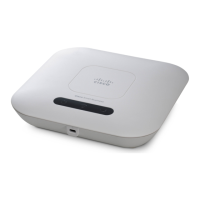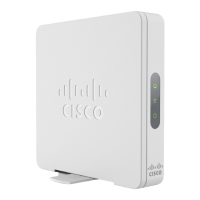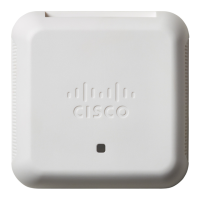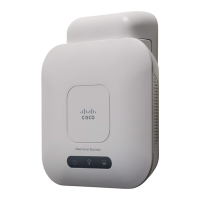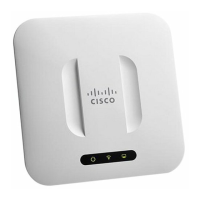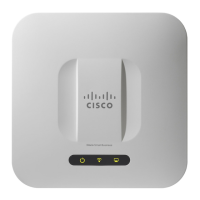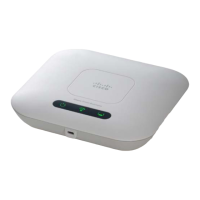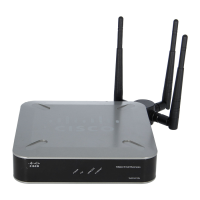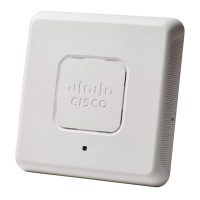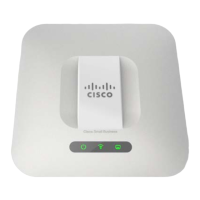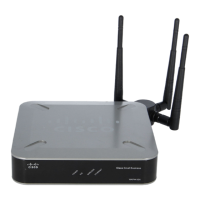Even though a client station is allowed to associate this does not ensure it can exchange
traffic with an WAP device. A station must have the correct WEP key to be able to
successfully access and decrypt data from the WAP device, and to transmit readable
data to the WAP device.
Note
◦
Shared Key requires the client station to have the correct WEP key in order to associate with the
WAP device. When the authentication algorithm is set to Shared Key, a station with an incorrect
WEP key cannot associate with the WAP device.
◦
Both Open System and Shared Key. When you select both authentication algorithms, the client
stations configured to use WEP in shared key mode must have a valid WEP key in order to associate
with the WAP device. Also, the client stations configured to use WEP as an open system (shared
key mode not enabled) can associate with the WAP device even if they do not have the correct
WEP key.
Static WEP Rules
If you use Static WEP, the following rules apply:
•
All client stations must have the Wireless LAN (WLAN) security set to WEP, and all clients must have
one of the WEP keys specified on the WAP device in order to decode AP-to-station data transmissions.
•
The WAP device must have all keys used by clients for station-to-AP transmit so that it can decode the
station transmissions.
•
The same key must occupy the same slot on all nodes (AP and clients). For example, if the WAP device
defines abc123 key as WEP key 3, then the client stations must define that same string as WEP key 3.
•
The client stations can use different keys to transmit data to the access point. (Or they can all use the
same key, but using the same key is less secure because it means one station can decrypt the data being
sent by another.)
•
On some wireless client software, you can configure multiple WEP keys and define a client station
transfer key index, and then set the stations to encrypt the data that they transmit using different keys.
This ensures that neighboring access points cannot decode other access point transmissions.
•
You cannot mix 64-bit and 128-bit WEP keys between the access point and its client stations.
WPA Personal
The WPA Personal is a Wi-Fi Alliance IEEE 802.11i standard, which includes AES-CCMP and TKIP
encryption. The WPA Personal uses a pre-shared key (PSK) instead of using IEEE 802.1X and EAP as is
used in the Enterprise WPA security mode. The PSK is used for an initial check of credentials only. WPA
Personal is also referred to as WPA-PSK.
This security mode is backwards-compatible for the wireless clients that support the original WPA.
To configure WPA Personal, configure the following:
• WPA Versions — Choose the types of client stations from the following:
Cisco WAP125 Wireless-AC/N Dual Band Desktop Access Point with PoE
46
Wireless
Configuring Security Settings
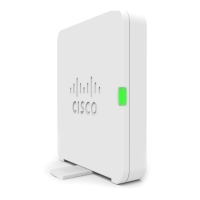
